
Nvidia's GeForce GTX 1060, like its two larger sisters, GeForce GTX 1070 and GeForce GTX 1080, is banking on the new Edge design – but this time in a slightly more cost-friendly version.
The appearance is quite neat for a reference card – pardon: the "Founders Edition" – and still makes a good figure despite the already clearly visible austerity constraints.

But what arguments are there to prefer this 845 gram DHE card (Direct Heat Exhaust with radial fan) to the board-parter cards with the completely different designed axial fan designs? Who are now looking for an answer?
External structure and connections
Despite the significantly shorter board, the card still has a length of 25.4 cm (measured between slot aperture and card end), a mounting height of 10.7 cm (upper edge motherboard slot to top card) and a depth of 3.8 cm. Here the slot aperture is the widest part; on the map itself only about 3.5 cm.
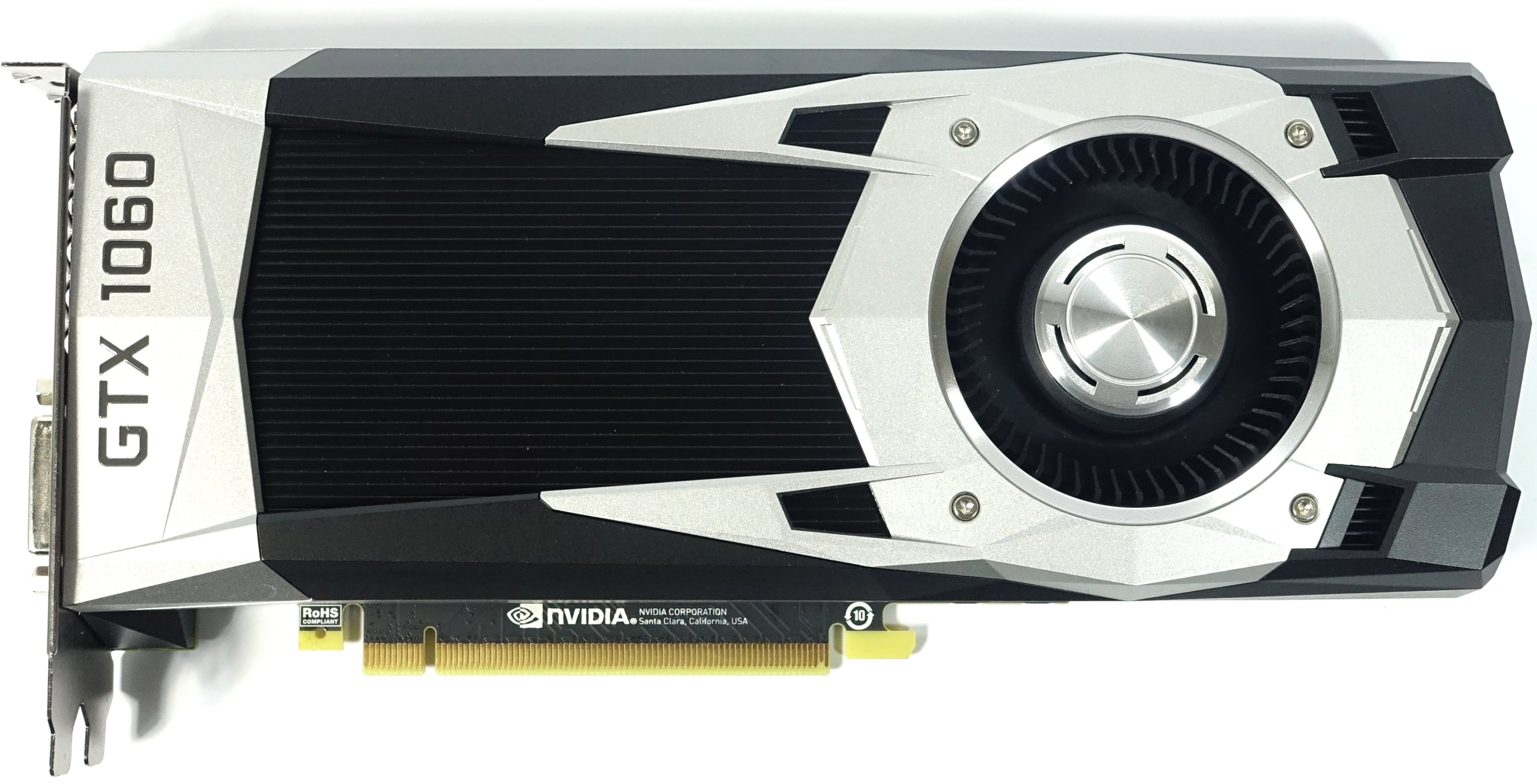
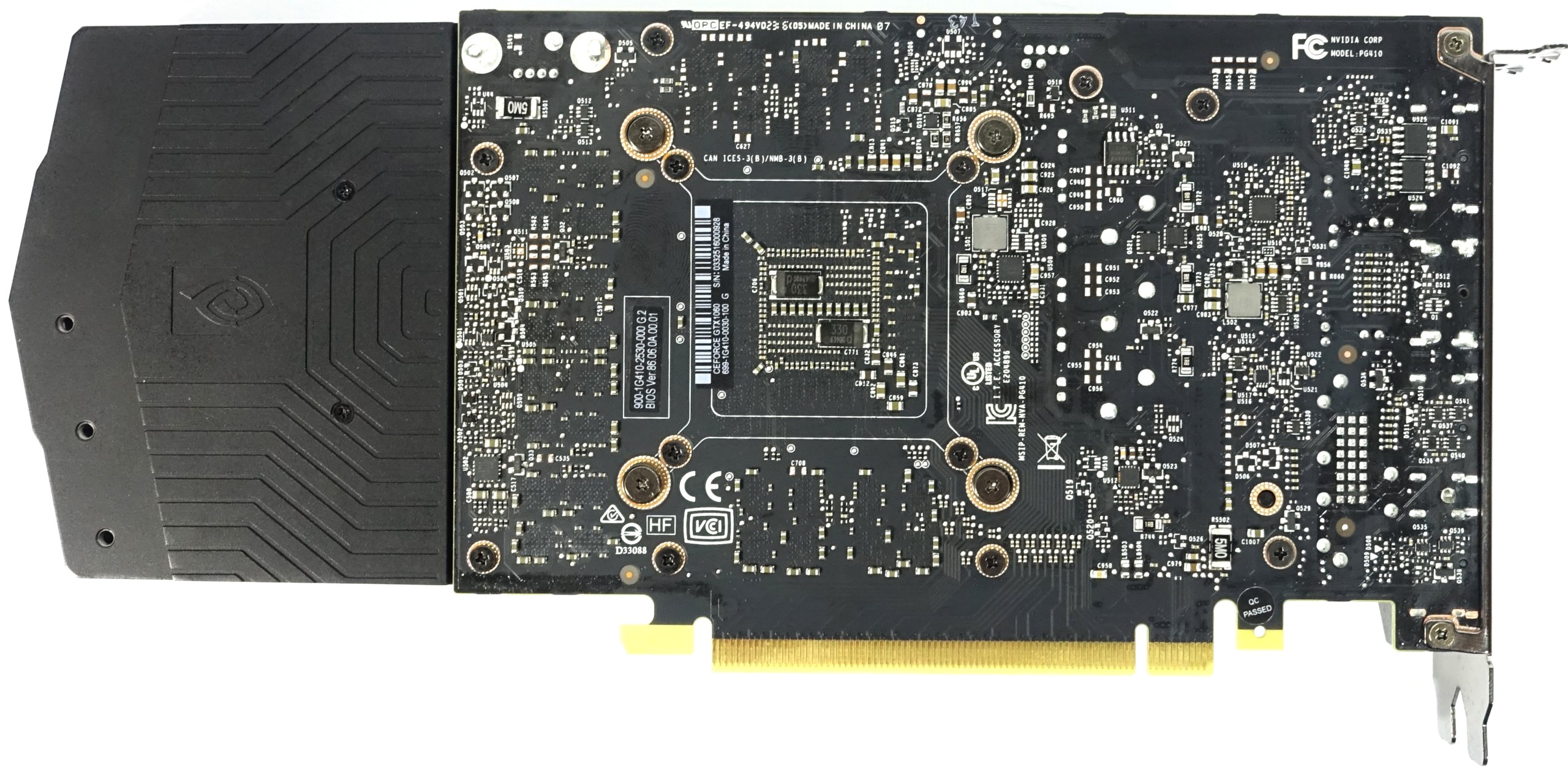 |
For the card cover, Nvidia again uses a material mix of aluminium and plastic, whereby the cover has already been made a little easier this time. It can be removed in one piece, including the fan, as we will see in a while.
The illuminated "GeForce GTX" lettering is also not missing. We will go into the somewhat strangely positioned PCIe power supply connection later.

In contrast to previous radiator constructions on graphics cards with a short board, the overhang of the housing is no longer equipped with an air opening for the usual radial fan, but is covered with a cover. However, a conventional backplate is dispensed with for cost reasons.

The back shows up with the well-known, gill-shaped air intakes, which in this case are to be addressed to you when working with the card in the housing. Read: Careful handling is required here.
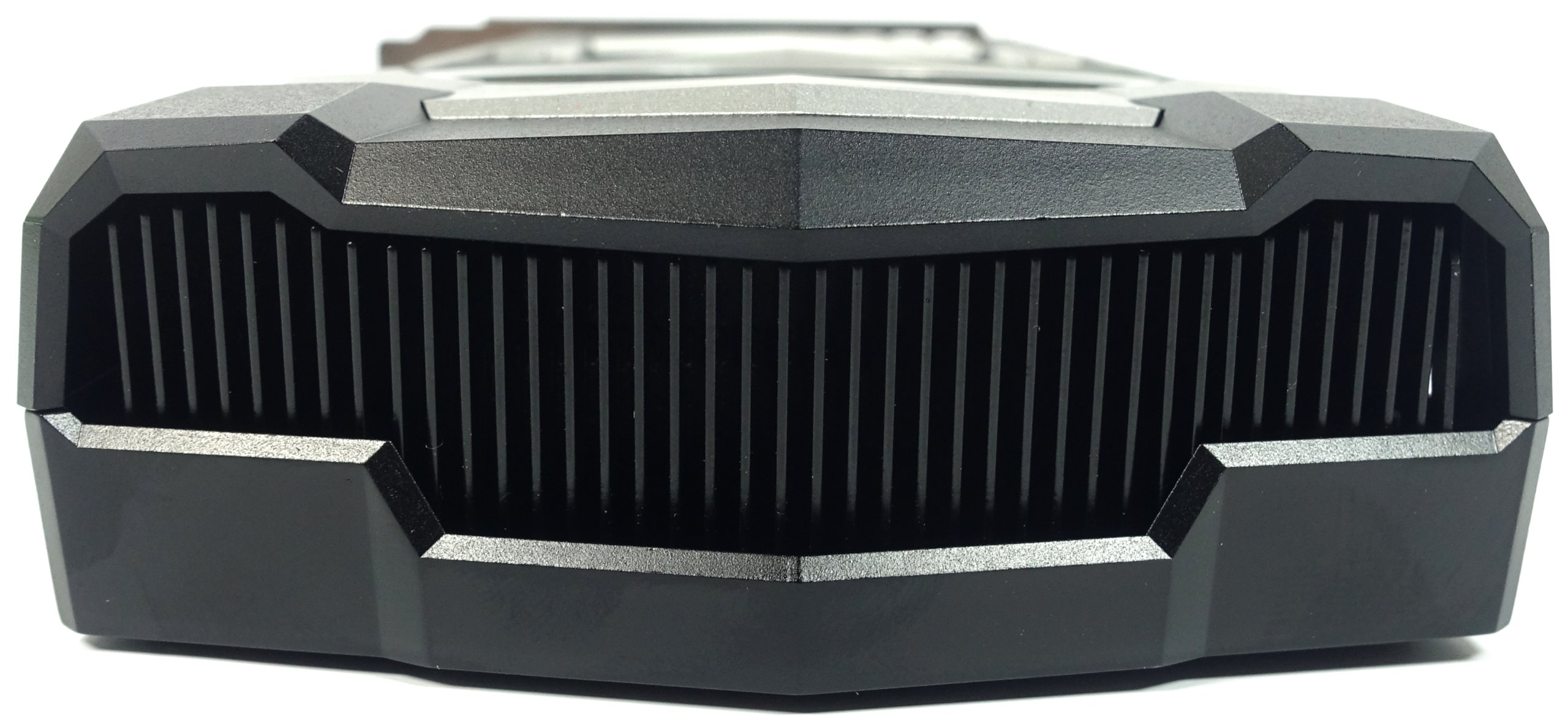 |
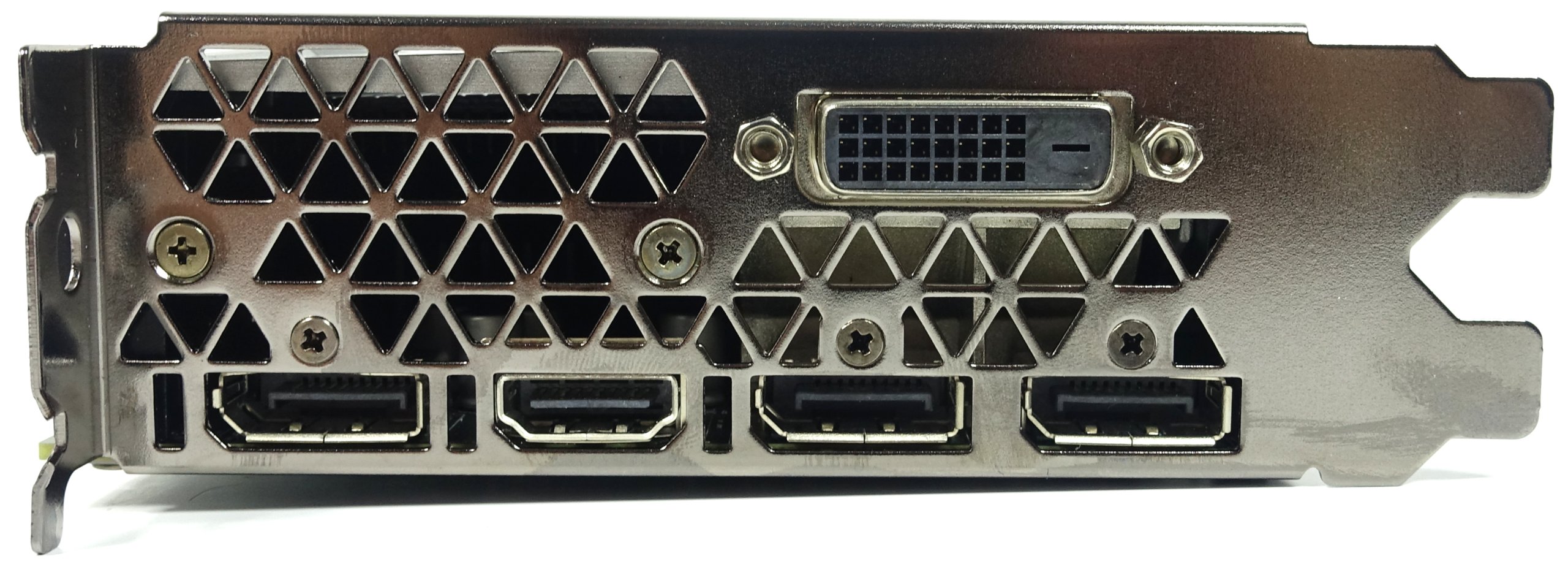 |
The slot panel shows no changes compared to the two Pascal cards already presented. The slot aperture is also dominated by a total of three DisplayPort connectors, which Nvidia identifies as DisplayPort 1.2-certify, but also refers to the implementation of newer standards (DisplayPort 1.3/1.4 ready). The built-in controller chip can do it anyway.
In addition, there is an HDMI 2.0 output and the dual DVI-D output. Nvidia completely dispenses with an analog signal.
Board and assembly
Of course, the focus is again on the graphics processor on its socket, whereby the GP106-400-A1-GPU is much smaller than the GP104 chip of the two already launched GeForce models GTX 1070 and GTX 1080. However, there are other striking differences to the other circuit boards, which affect, for example, the installed memory.
It is noticeable that in the GTX 1060 only six of the eight existing memory fields are filled with modules. These are Samsung modules of the type K4G80325FB-HC25 with a capacity of eight gigabit (32x 256 MBit each), which can be operated with voltages between 1.305 and 1.597 volts depending on the required clock. In total, this results in a total memory of six gigabytes.
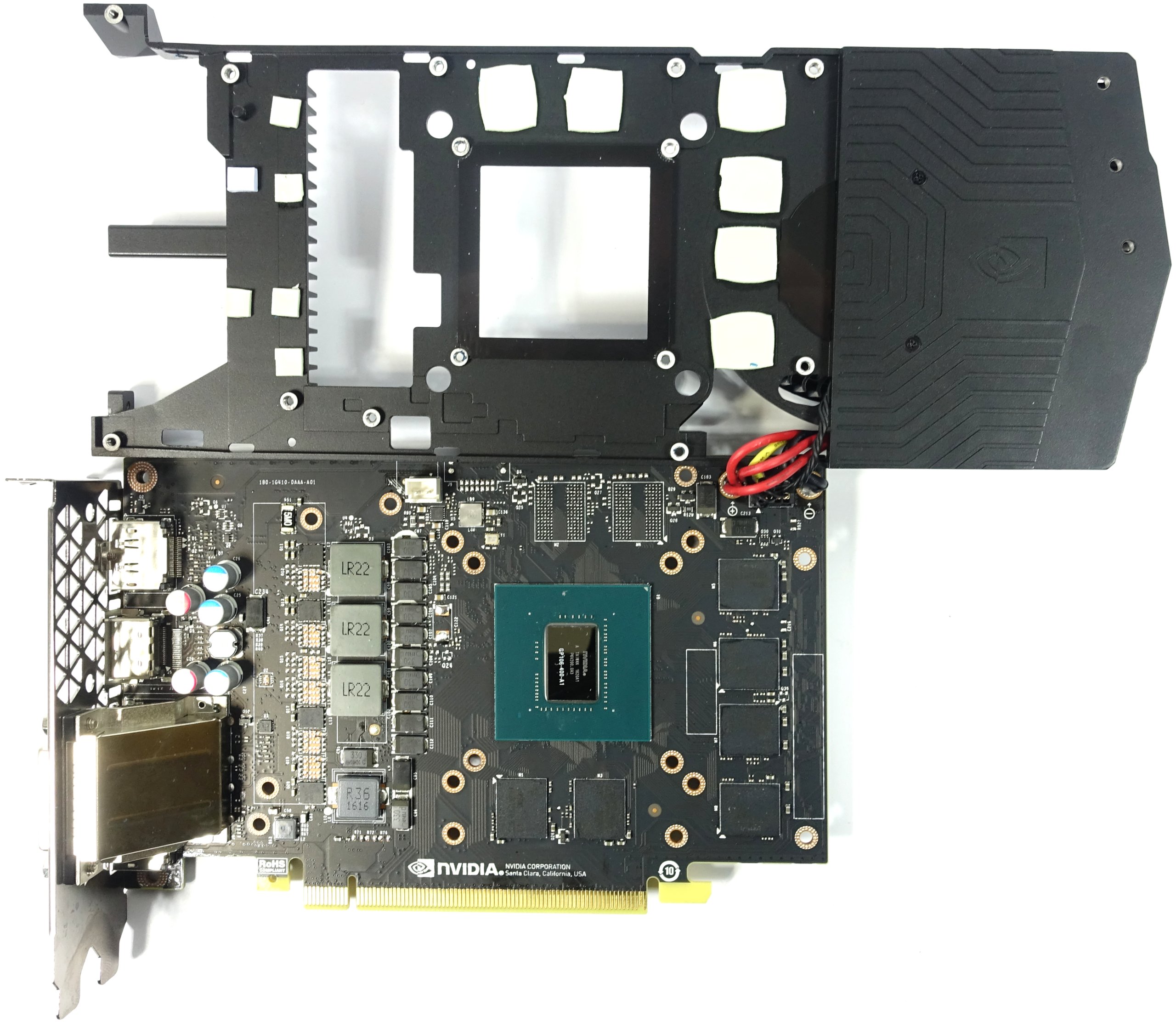
The unfortunately undocumented PWM controller uP9509 comes again from uPI Semiconductor Corp and is quite obviously the smaller brother of the uP9511P still used in the GP104 GPU. However, it is sufficient for the three phases for the GPU and the one for the memory.
The latter memory phase and one of the GPU phases are powered by the motherboard slot and the other two with the accessories from the PCIe connector. We will take a closer look at how this affects the load on the individual supply rails.
For voltage regulation, Nvidia relies on a single E6930 per phase, which as a dual-channel N-MOSFET serves both the high and low sides and eliminates the need for separate gate drivers. This also explains the free space on the board next to this component.
The three phases are completely sufficient for the GPU, record relatively low voltage transformer losses and are also more meaningfully divided than the six phases of the Radeon RX 480.
Except for the slightly lost PCIe supply connection, the 1060 reference card (pardon: Founders Edition) does not make a bad impression, especially since even a radial fan-based cooling system does not have to be the worst solution with such low loss losses.
Clock rates, voltages and power consumption
It is noticeable that the GeForce GTX 1060 FE races into both the power and temperature limits. For this reason, we not only raised the boost clock when trying to test overclocking, but also set the power target to 116 percent and let the fan rotate at 100 percent.
The result is quite impressive, because with our sample we achieve stable 2050 MHz even in the most demanding run. Without the help of the small energy injection and the hardcore hair dryer, the gradient curves are much more hilarious:
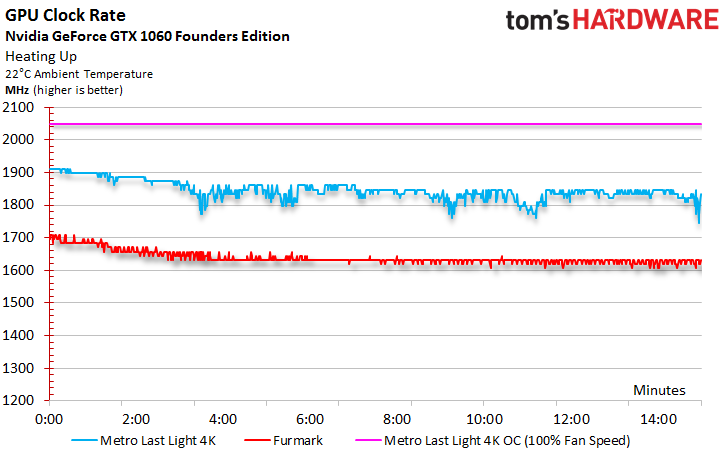
Let's compare the voltages in normal operation and let the eyes wander up to the first graphic from time to time. We see very clearly that when limiting both boost clock and the voltages go down.
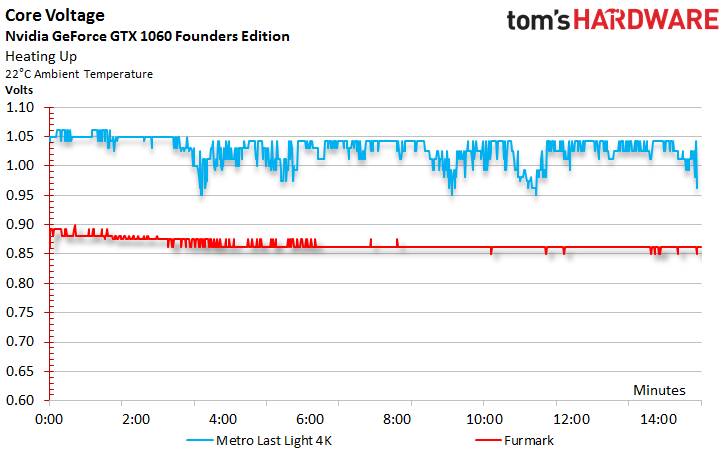
The lowest GPU clock speed for idle measurement is 139 MHz. We worked with a variable low-pass filter for the measurements, so that we only mention possible, very short load peaks on the margins (greyed out bar), because they are hardly relevant in practice and have also irritated many readers.
This peak value represents the short peak loads remaining despite the smoothing described above and is irrelevant to practice – because the periods are still too short for an influence on the valuation. Due to the smoothing, the really short-term, extreme load peaks are no longer taken into account.
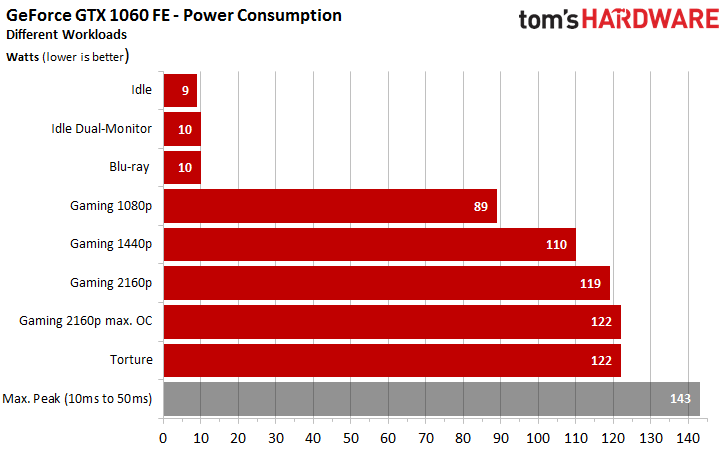
Loading of the power supply connections
Now let's go into a little more detail and look at the load sharing at maximum gaming load and stress test. Since Nvidia no longer actively uses the 3.3V motherboard connector on the GeForce GTX 1060 FE, we have dispensed with this voltage rail in the diagrams.
We can see here the successful division, which clearly shows the weighting towards the PCIe connection:
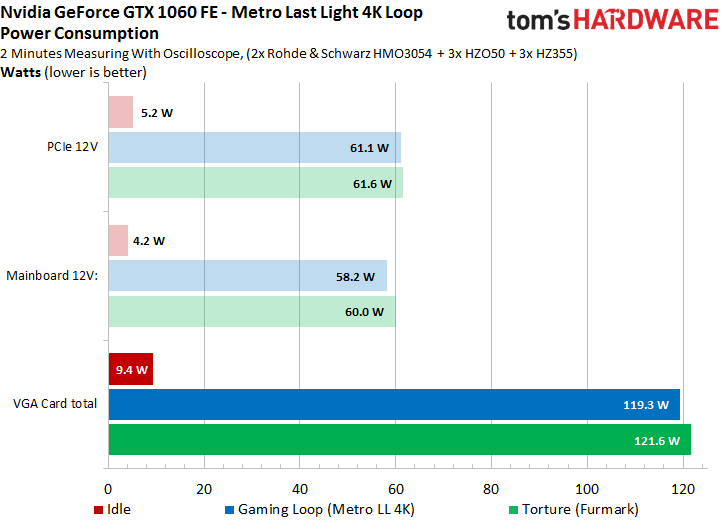
Here's another clickable diagram with the respective history curves for gaming and stress testing:
 |
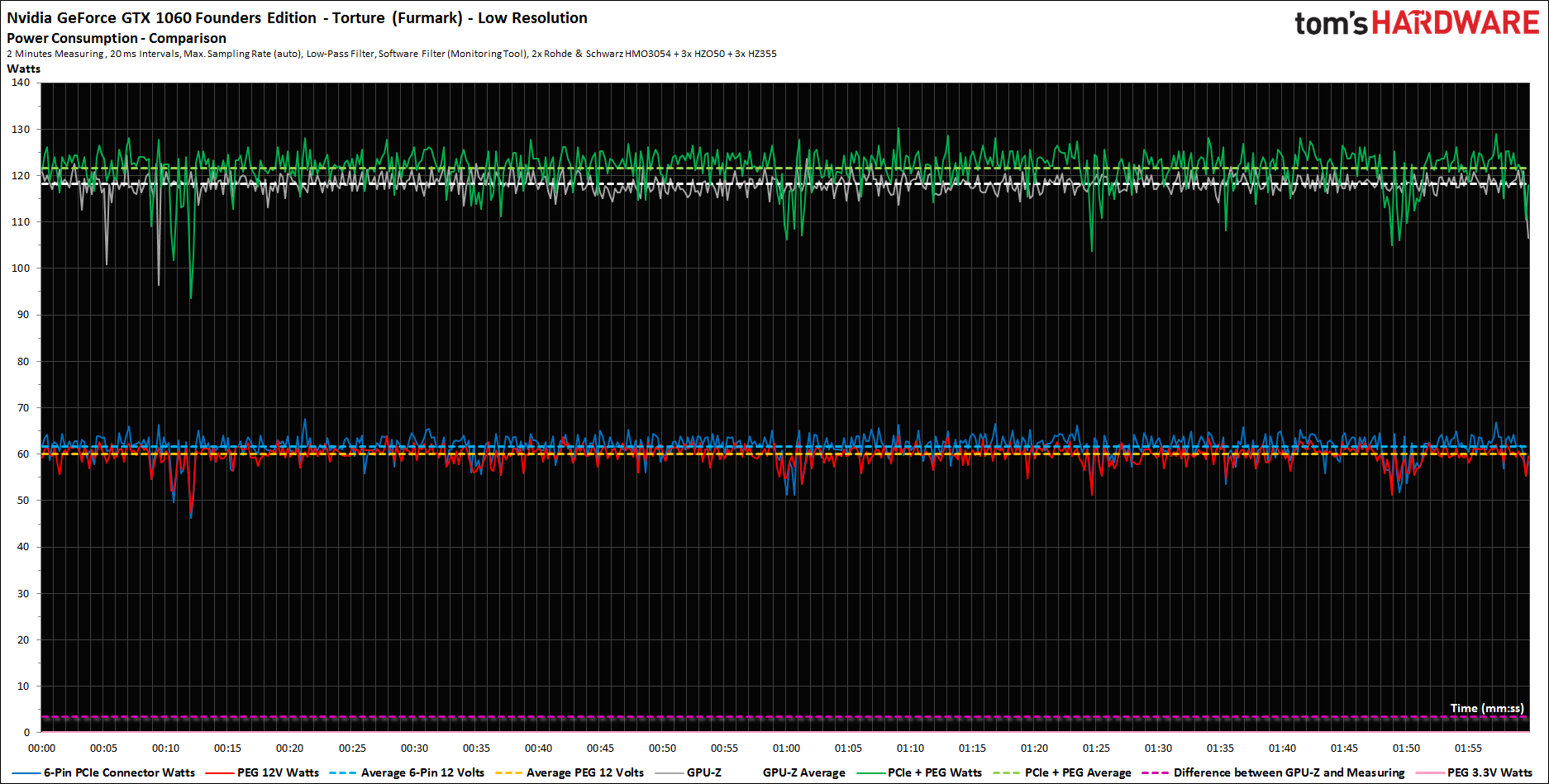 |
Since the standards (PCI SIG) refer only to the flowing currents, we now look at the following diagrams, because the power consumption is only half the rent. With under four amperes on the motherboard slot, however, you are definitely on the safe side (PCI-SIG standard: max. 5.5 ampere):
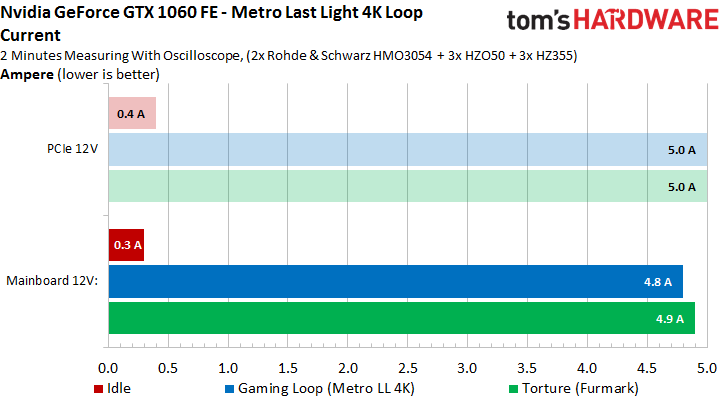
Of course, there are still clear large screens for the measured currents:
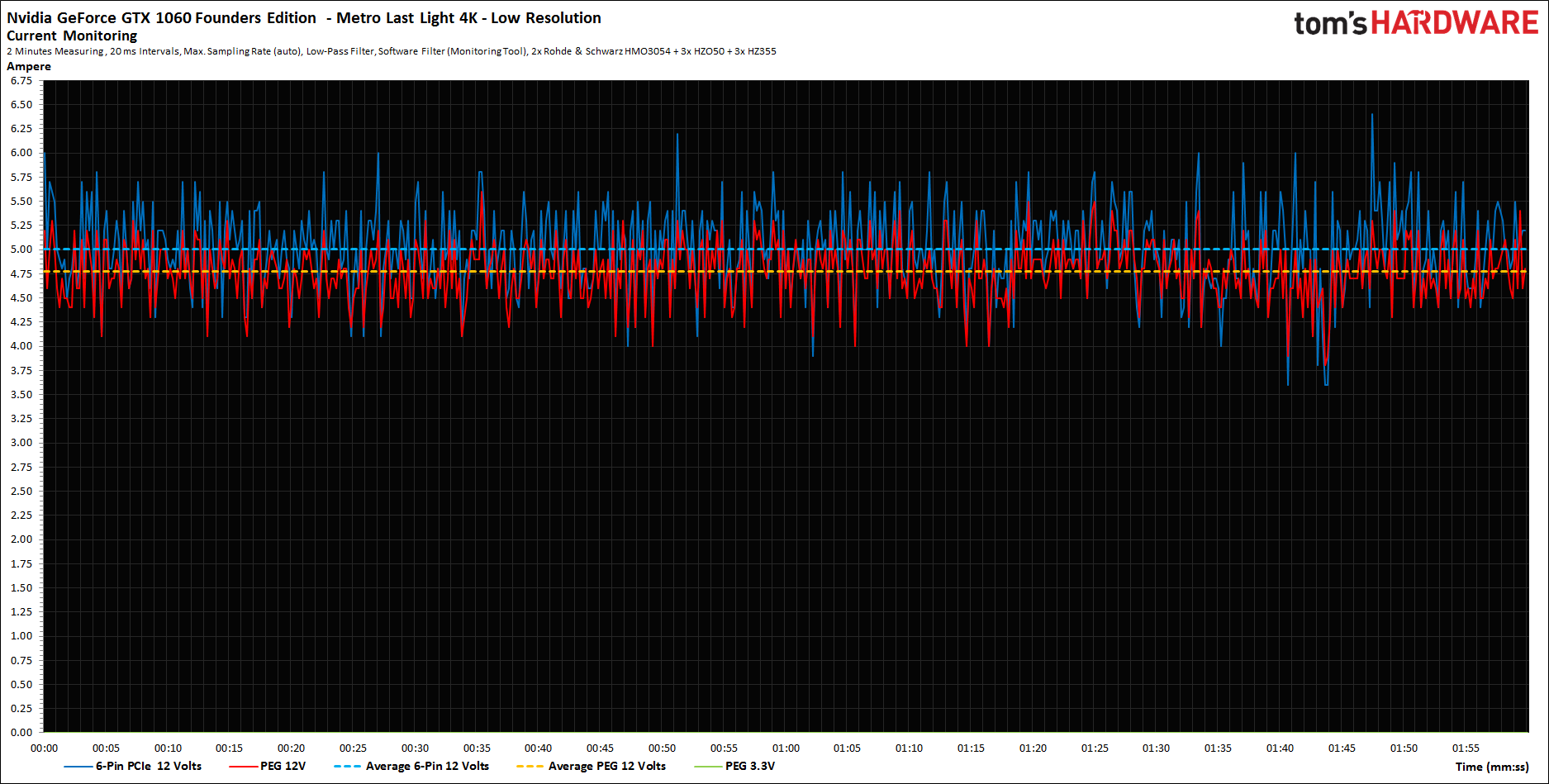 |
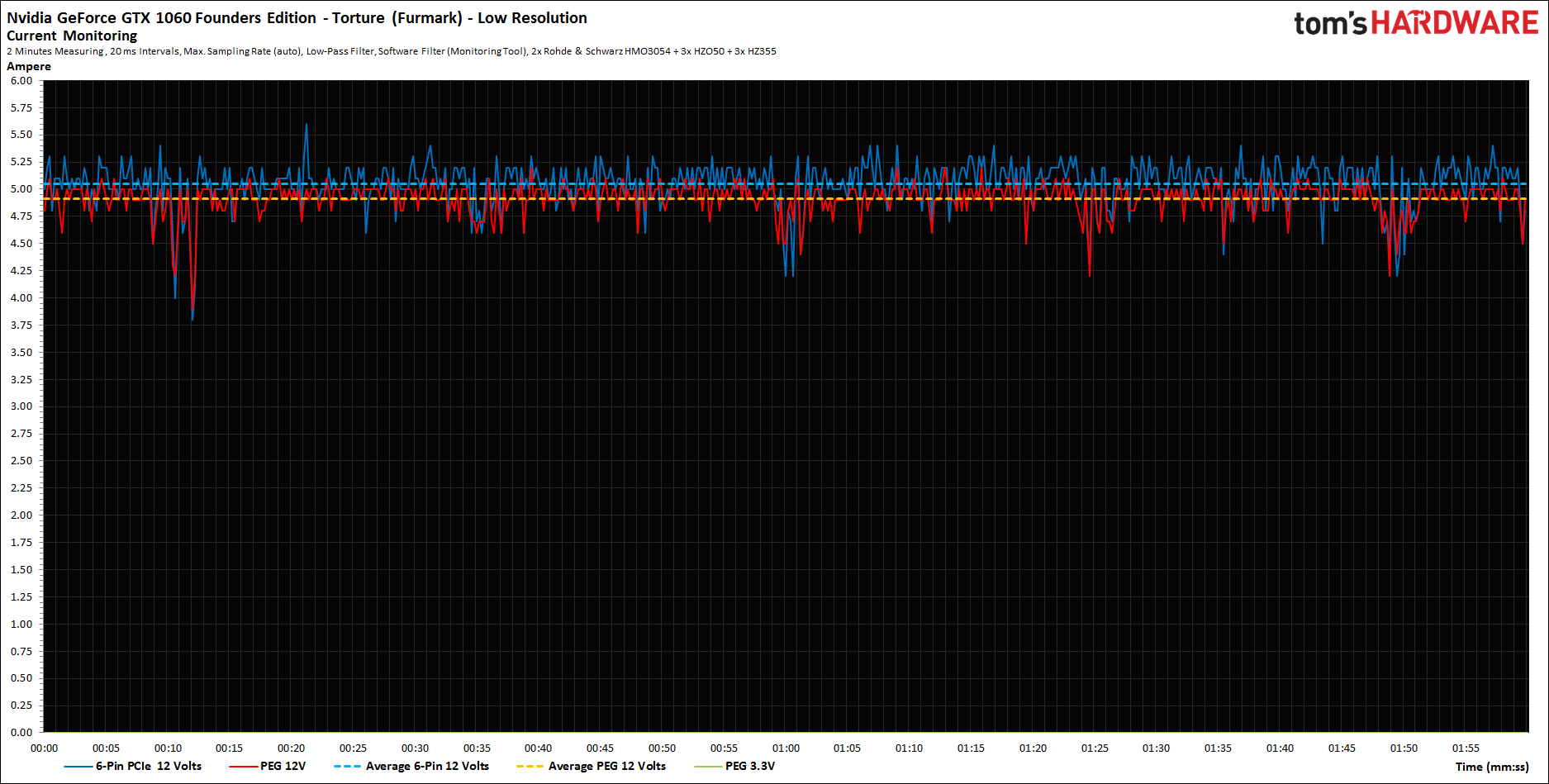 |
Cooling system and temperatures
What immediately strikes us is the positioning of the PCIe connector in the extended housing, which is now self-sufficiently connected with extended cables.
This solution is not nice – and it also prevents board partners from being able to build extremely short cards with this reference board, which is actually only 17.5 cm long, as there is simply no space for the PCIe connection jack.
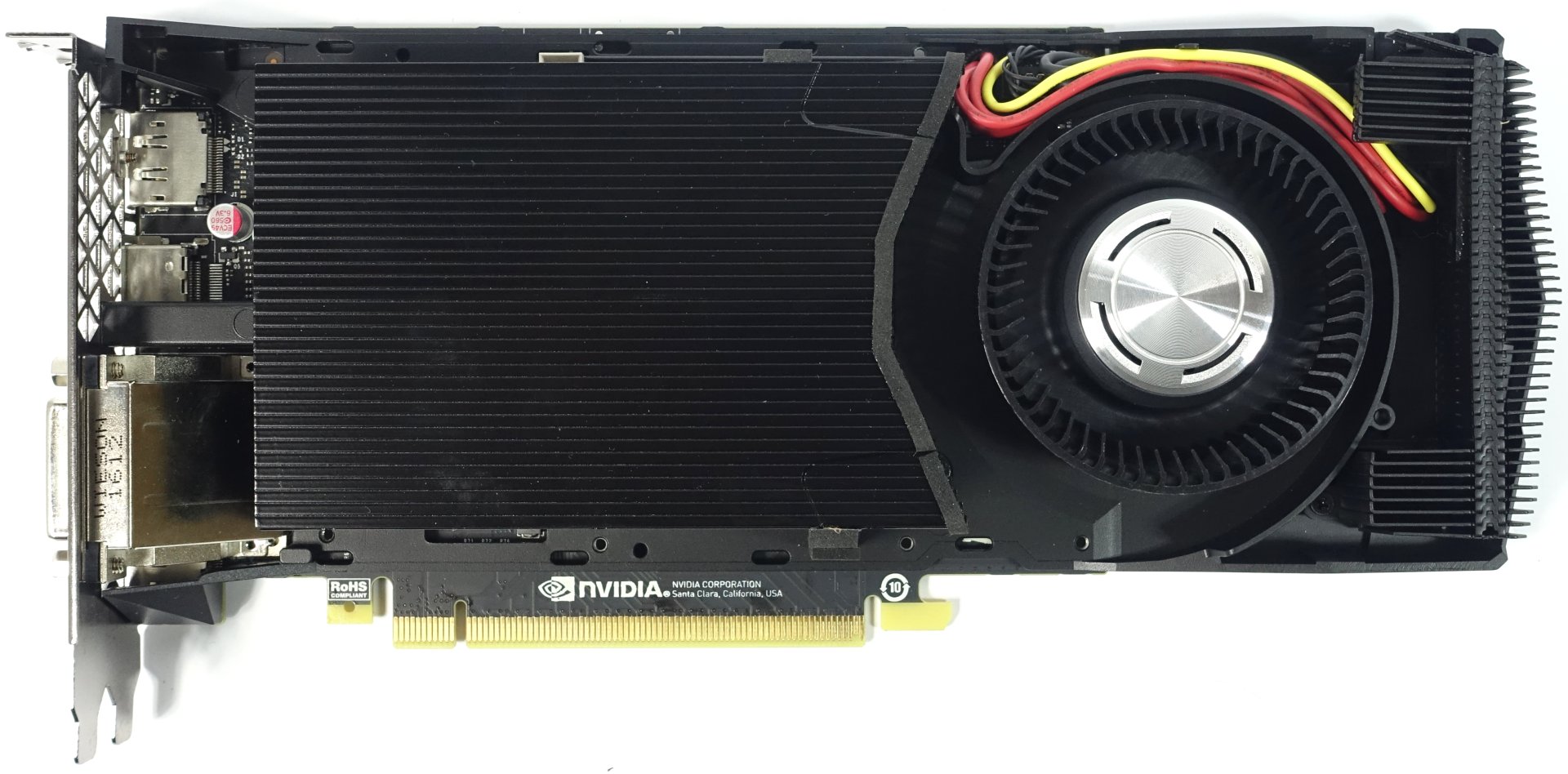 |
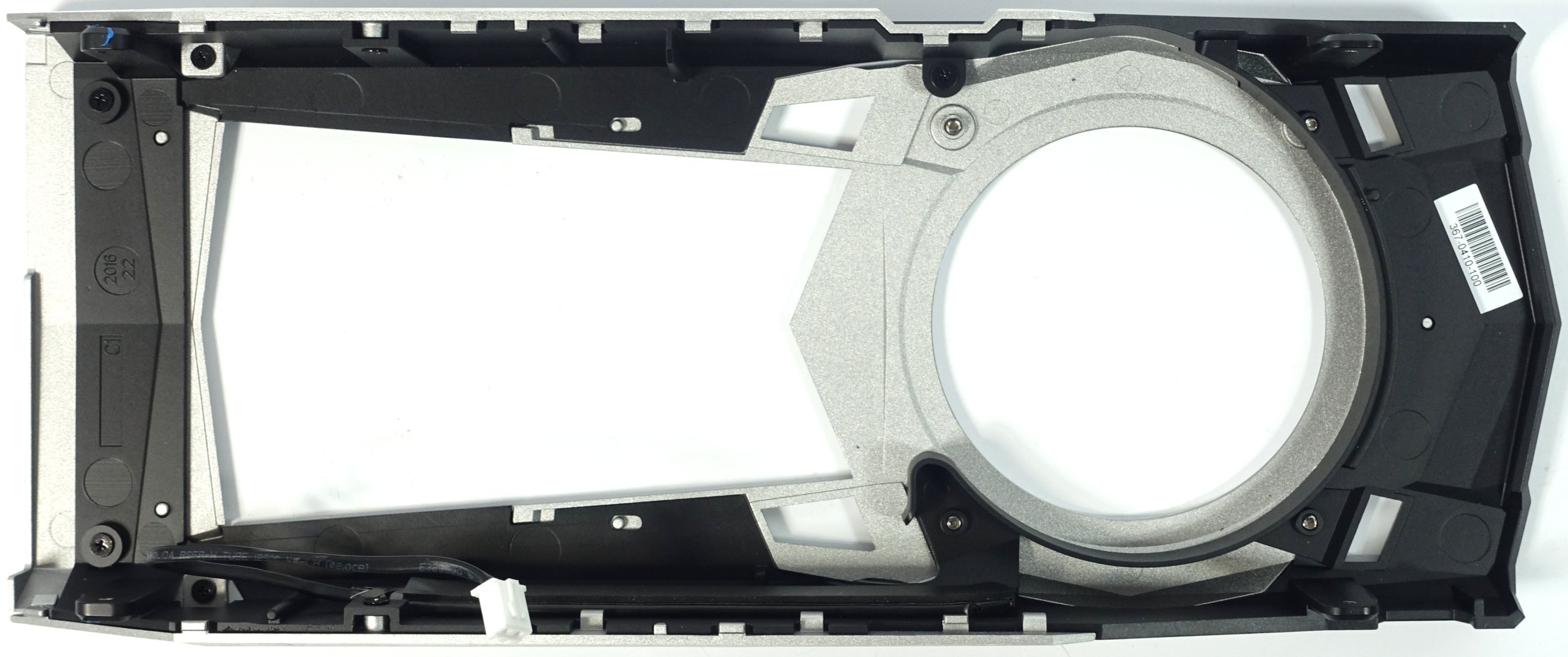 |
If you remove the actual radiator block by loosening the four screws used for fixing, you will see a massive copper heat sink and a metal frame. The closed slat heat sink is similar to the GeForce GTX 1070 and should be loose enough for the GPU's targeted power dissipation.
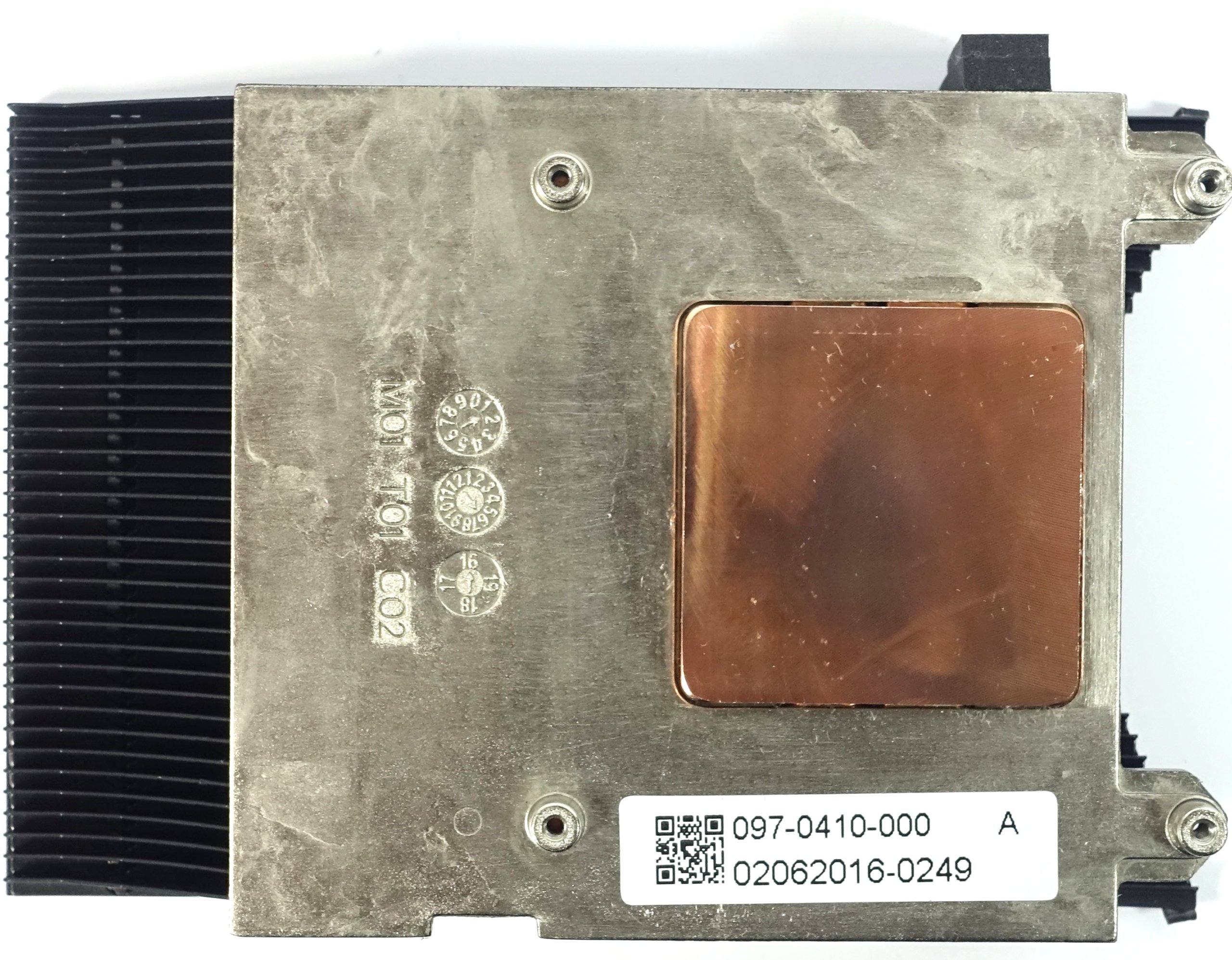
Again, the massive mounting and cooling frame is striking, which on the one hand ensures that voltage converters and storage remain sufficiently cool, and on the other hand is also responsible for the stability of the overall construction.
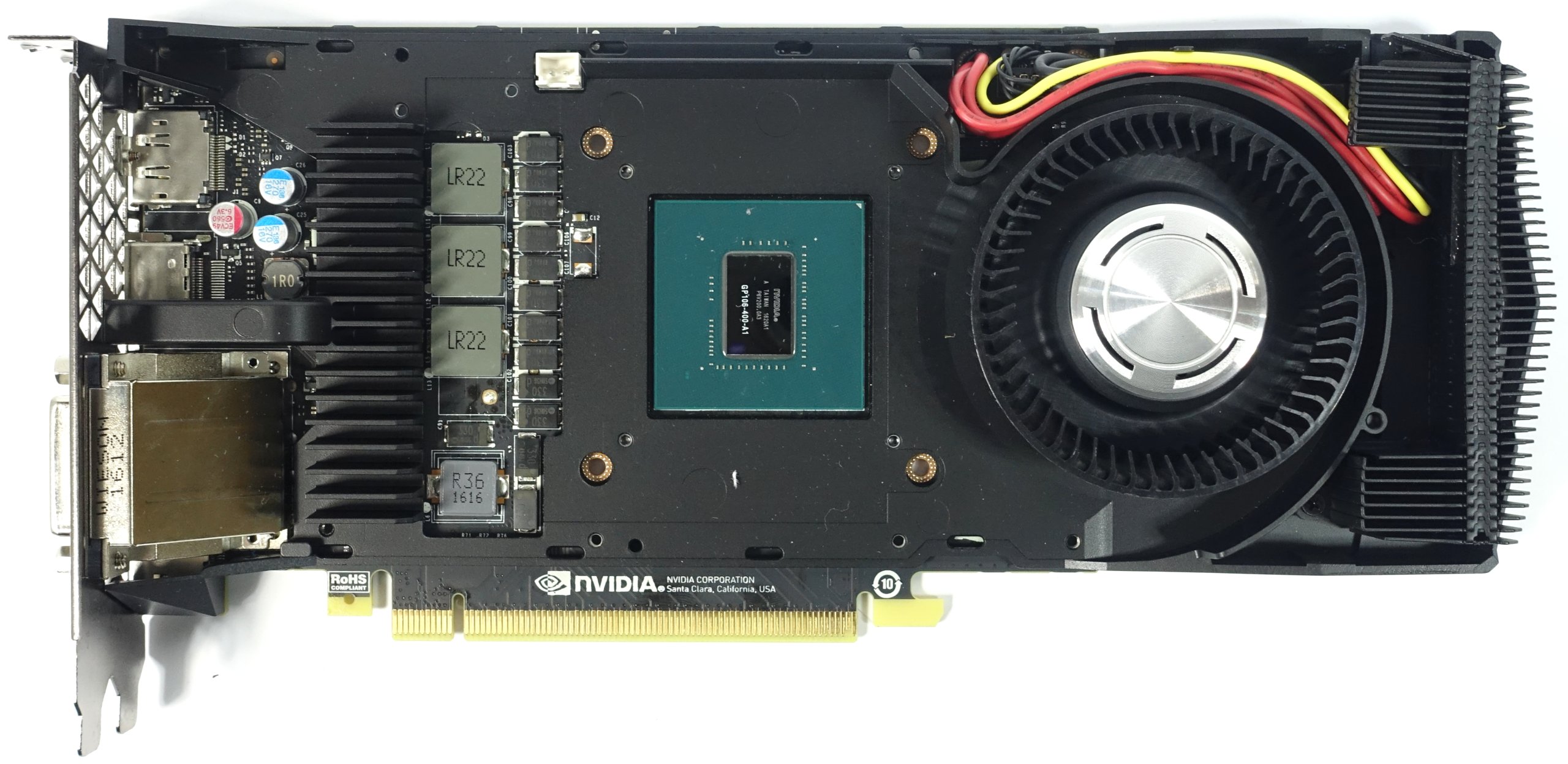
Since the card generates very similar power consumption values for both the gaming (119 watts) and the torture loop (122 watts), the two temperature curves are logically very close to each other. Here, Boost 3.0 intervenes very restrictively and regulates simply and efficiently via voltage and clock, which must not be allowed to be by default.
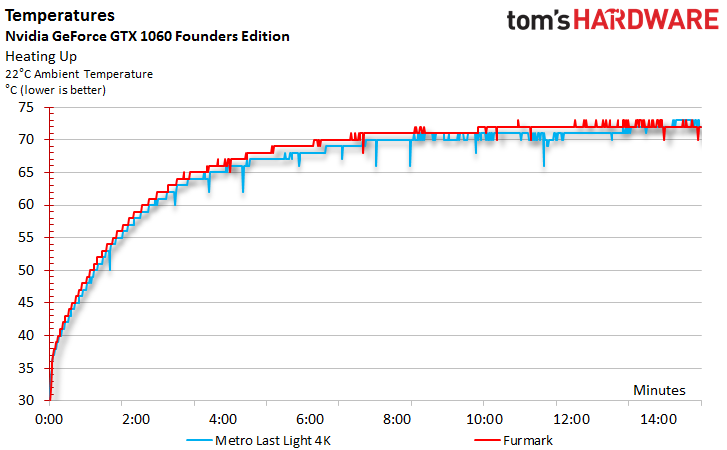
Let's look at the whole thing as an infrared image. The cooler does exactly what it's supposed to do with the GPU – to cool it down. The four voltage transformer trains are also all in the deep green area.
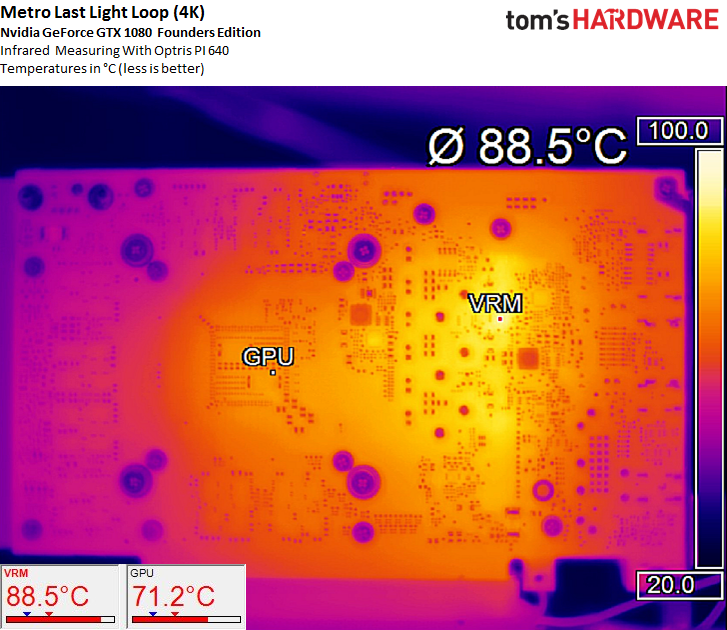
In the stress test, the three GPU voltage converters reach just under 97°C, which is just fine. But: Nobody plays stress test for hours, so these values are more of a thing for the gallery.
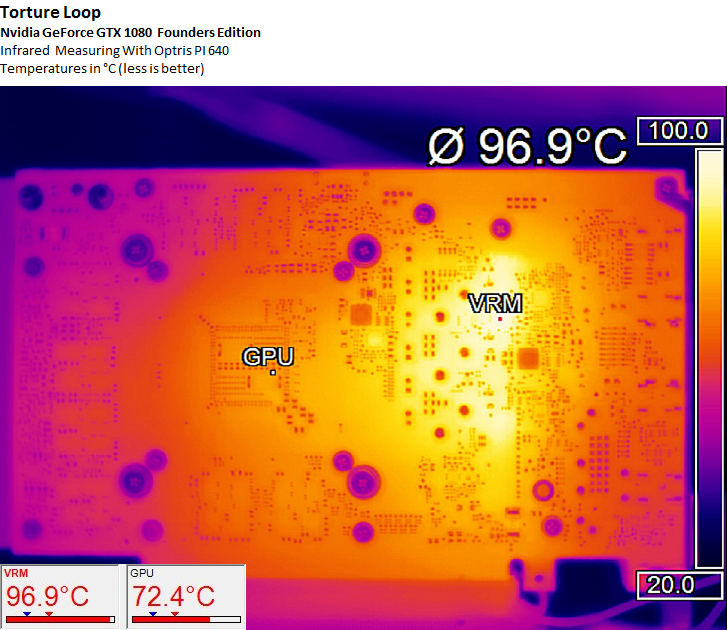
Noise
The main source of the resulting noise emission is always the fan – so let's first take a look at the speeds, which only settle into a stable final value after about 15 minutes. Both curves lie – nicely following the very similar temperatures – almost identically to each other.
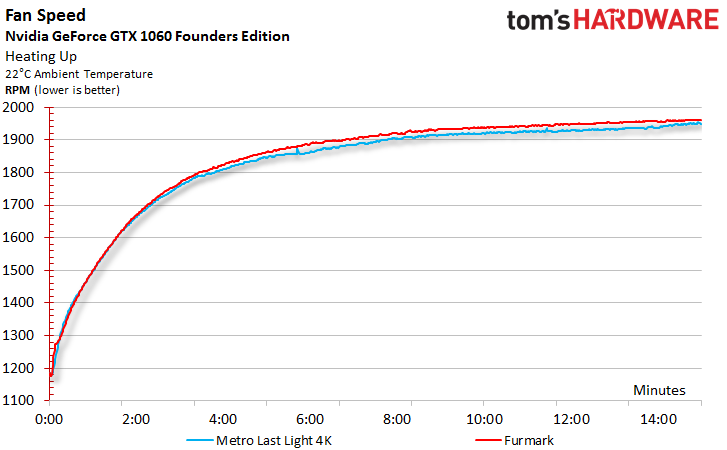
In the idle, the measured 31.4 dB(A) is a good value that is only slightly above the noise level of a common living space. The sound character of Nvidia's radial fan is much more pleasant at low speeds than the slightly more "snarling" radial fan of the recently tested Radeon RX 480 reference card, although the level is a tiny tick higher.
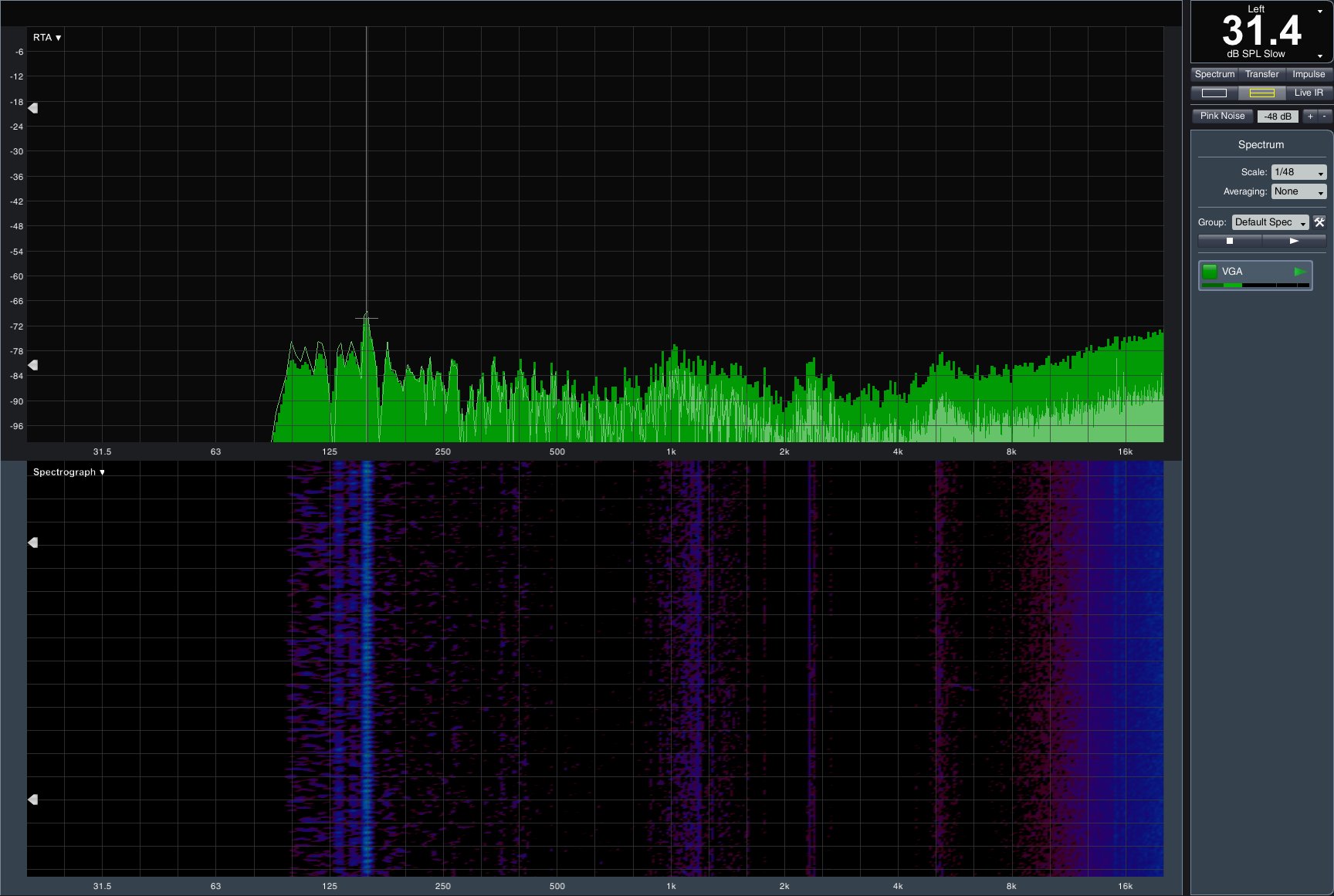
Now let's take a look at the noise in the gaming loop after the map has reached its maximum temperatures (see temperature diagrams above). The measured 35.4 dB(A) is also a really good value, especially since you can hardly hear engine and bearing noises. The sound character is not as deep-tone and humming as the recently tested AMD card, but resembles a much more pleasant noise.
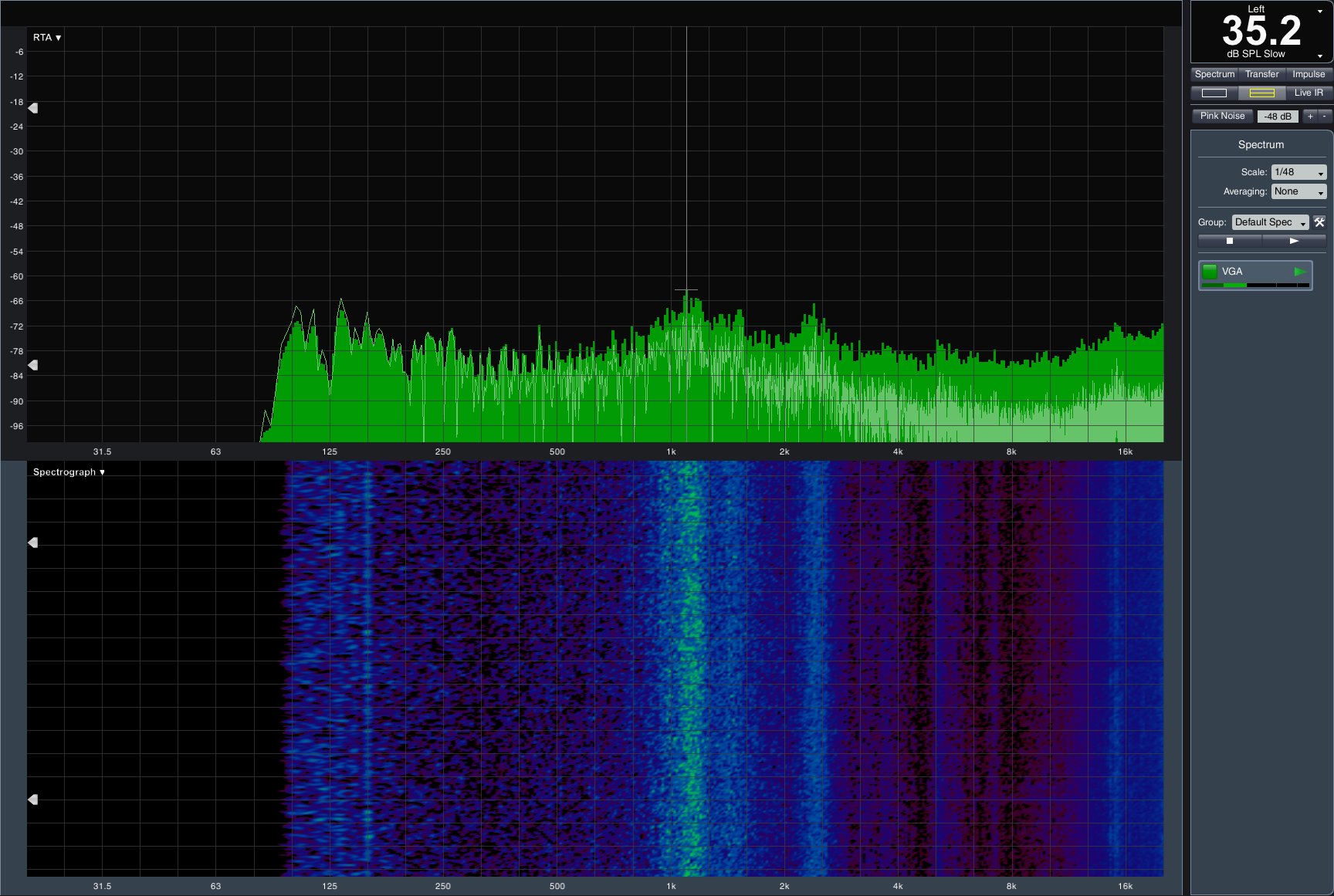
A glance at the spectrum shows very clearly that the main part of the operating noise consists of pure rotor and air noises and that the acoustic love greetings from the voltage transformer range are also very poor this time. This allows the DHE solution (Direct Heat Exhaust) to attest to a good performance AND a restrained nature. But the maximum 120 watts are of course not a real challenge, but almost to cool away with the wet thumb.
Technical data and interim conclusion
Let's take a look at the technical data and individual details of the graphics card:
- 1 - Einführung und Übersicht
- 2 - EVGA GeForce GTX 1060 Superclocked
- 3 - Gainward GeForce GTX 1060 Phoenix GS
- 4 - Gigabyte GeForce GTX 1060 G1 Gaming
- 5 - inno3D GeForce GTX 1060 Gaming OC
- 6 - MSI GeForce GTX 1060 Gaming X 3G
- 7 - MSI GeForce GTX 1060 Gaming X 6G
- 8 - Nvidia GeForce GTX 1060 Founders Edition
- 9 - Palit GeForce GTX 1060 SuperJetstream
- 10 - [Neu] PNY GeForce GTX 1060 XLR8 OC Gaming
- 11 - Vergleich der Gaming-Performance
- 12 - Vergleich vom Temperatur, Lautstärke und Leistungsaufnahme
- 13 - Vergleichende Zusammenfassung und Fazit































Kommentieren